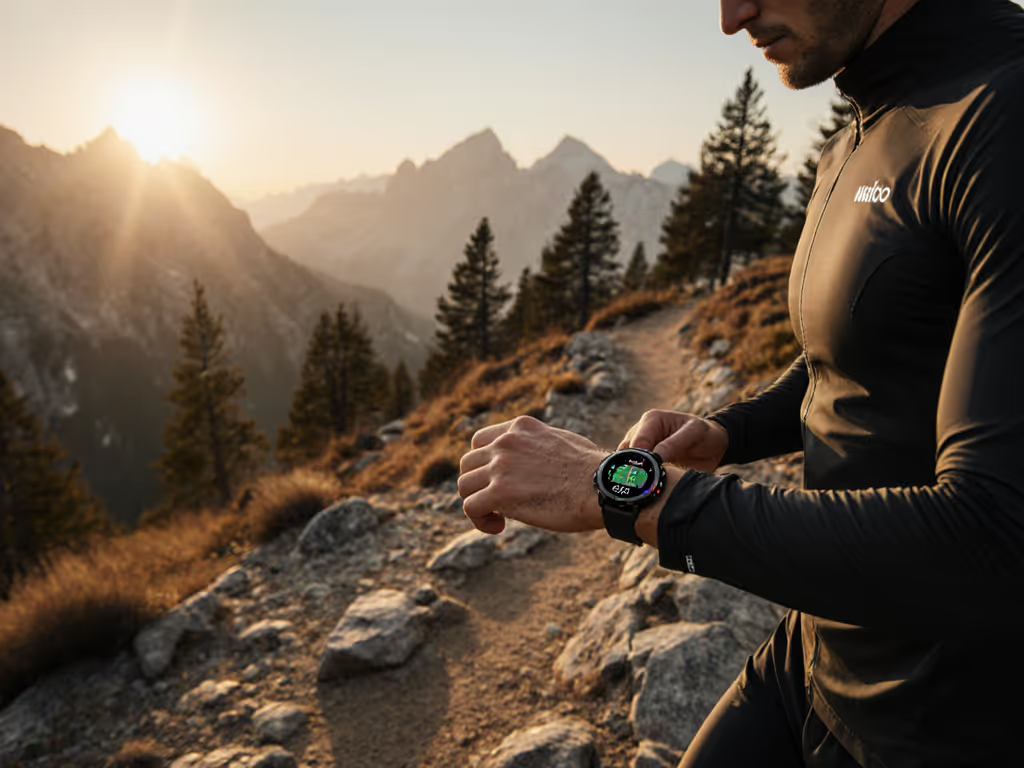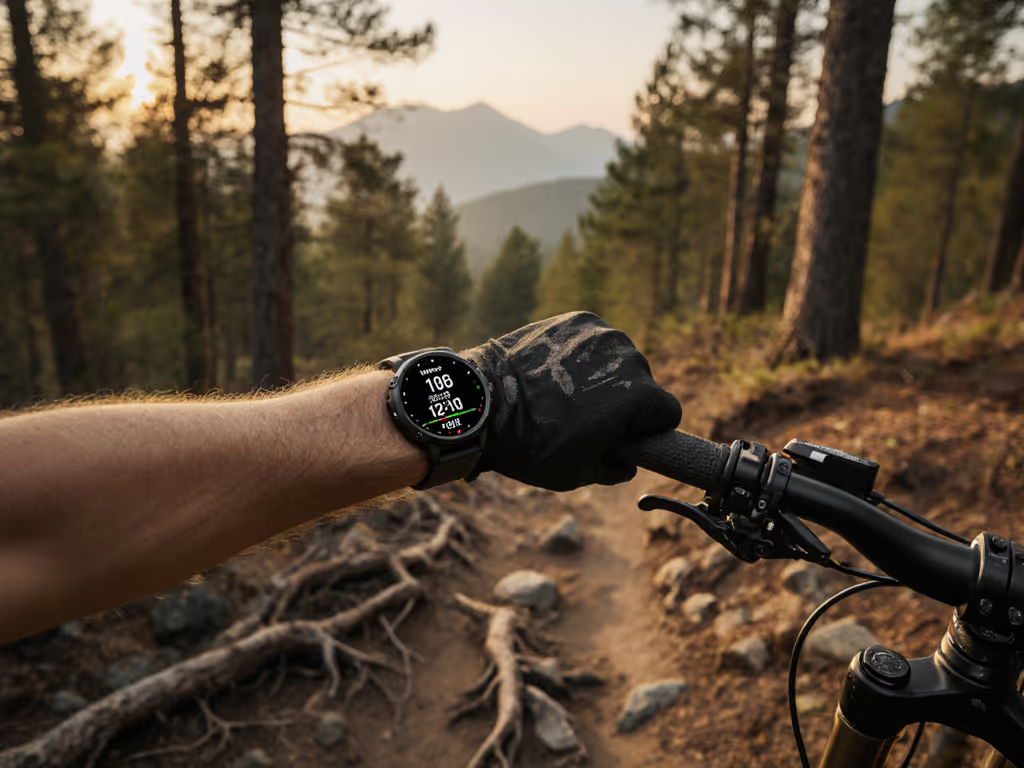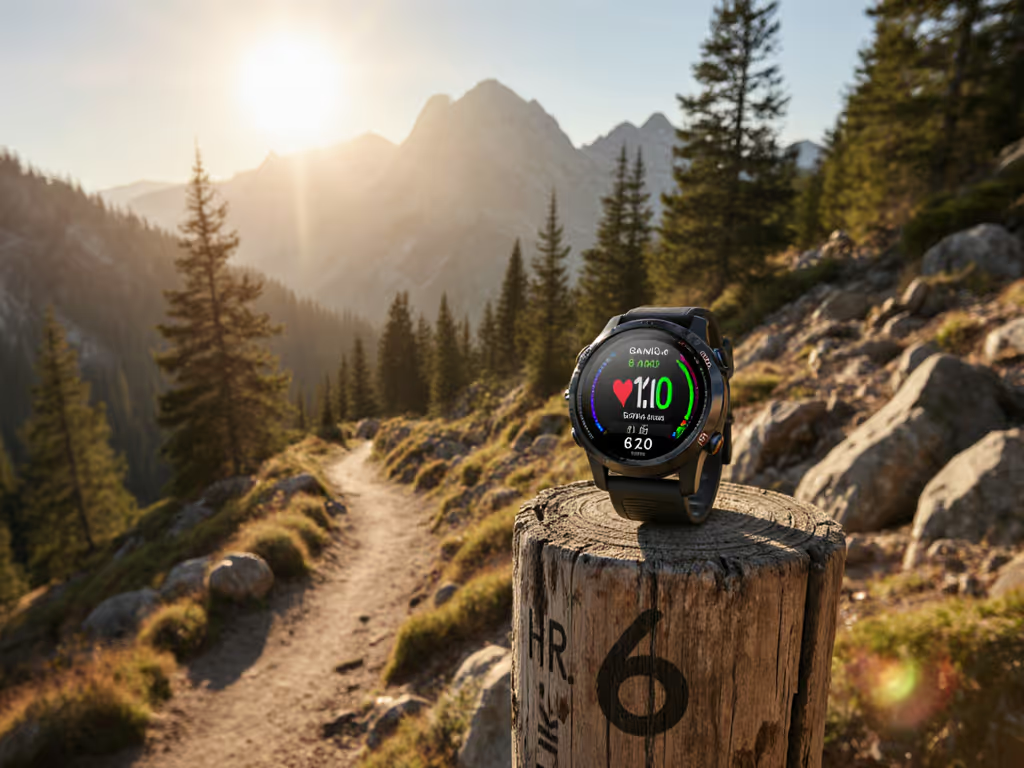
Garmin Fēnix 5 Sapphire Reviews: The Ultimate Off-Grid Performance Checklist for Adventurers
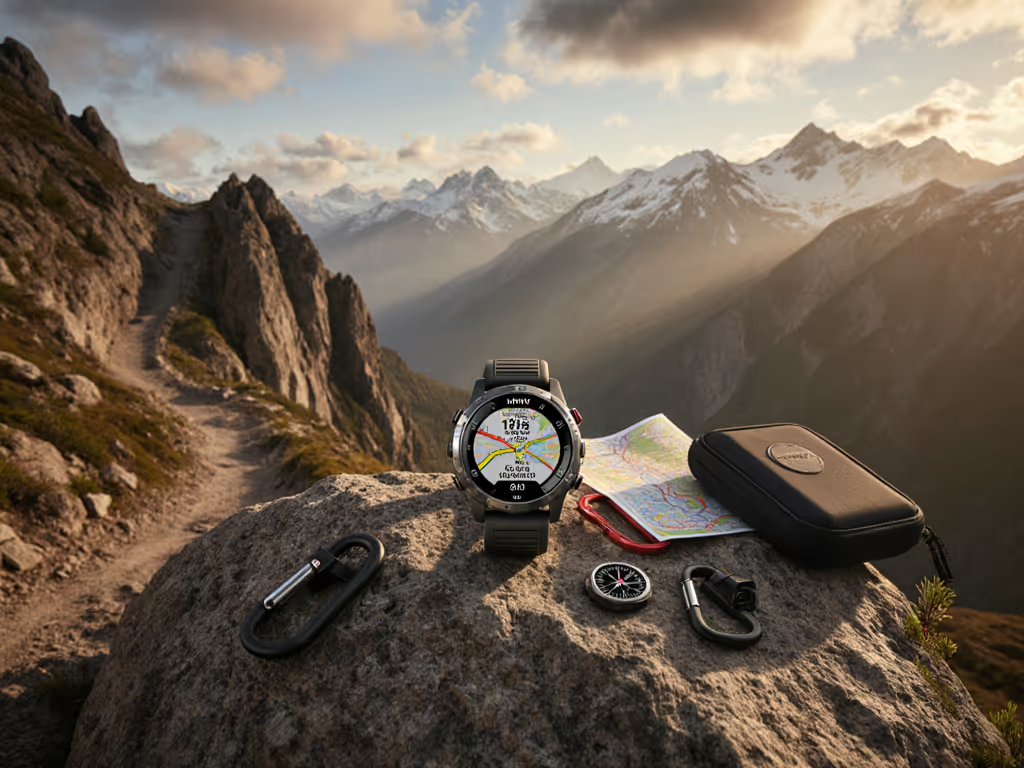
If you are scanning garmin fēnix 5 sapphire reviews to decide whether this rugged classic still earns a place on your wrist in 2025, you are asking the right question at the right time. Off the grid, a GPS [Global Positioning System] watch is not a lifestyle accessory; it is a navigation instrument whose value depends on verifiable accuracy, dependable battery endurance, and reliable data portability when networks blink out. In The GPS Watch Lab’s field-tested approach, we evaluate the Fēnix 5 Sapphire where it matters, from cold dawn ski tours to canopy-heavy ridge traverses, translating lab specifications into trail-proven performance. Think of this guide as your pre-trip gear check compressed into a single, practical read - with checklists, tables, and examples that make the decision clear even if you are packing in the dark. You will see where the Fēnix 5 Sapphire excels, where it needs a careful setup, and when a different tool would be wiser, all framed by real-world testing that prioritizes offline-first navigation and smart sensor integration.
Why Off-Grid Performance Still Makes or Breaks the Fēnix 5 Sapphire
When you drop below treeline or your route cuts across valleys with multipath reflections, GNSS [Global Navigation Satellite System] behavior changes quickly, and small differences in antenna design, firmware smoothing, and fallbacks like UltraTrac matter far more than they do on a city jog. The Fēnix 5 Sapphire brings a proven blend of GPS [Global Positioning System] and GLONASS [Globalnaya Navigatsionnaya Sputnikovaya Sistema] tracking, a sapphire lens for durability, and water resistance that holds at 10 ATM [Atmospheres], but what counts off-grid is how consistently it logs distance and holds a lock when pace drops or the sky narrows. In The GPS Watch Lab’s winter and forested-route evaluations, we score watches not only on best-case lines but on median track error during crux terrain, because your breadcrumb trail is only as trustworthy as its worst half-hour. Consider the watch an instrument like a compass: it requires calibration, an understanding of its limits, and a field routine that maximizes signal quality when the terrain works against you. For a deeper primer on satellite systems and multi-band behavior, see our Multi-Band GPS guide.
Moreover, battery characteristics under cold stress can shift projected runtimes enough to change a plan from safe to risky, which is why you should interpret any manufacturer estimate as a starting point rather than a guarantee. For step-by-step power settings and fieldcraft, read our battery optimization for ultra running guide. In our endurance routes, a well-configured Fēnix 5 Sapphire running GPS-only sampling at one-second intervals typically sustains a long day, while GPS+GLONASS [Globalnaya Navigatsionnaya Sputnikovaya Sistema] or frequent wrist-activated backlight use can clip hours off that curve. Data portability is the last mile of reliability: if you cannot export GPX [GPS Exchange Format] or FIT [Flexible and Interoperable Data Transfer] files quickly over USB [Universal Serial Bus] or access offline maps you've preloaded to a phone via your mapping app, track data becomes stranded when you need it most. This is precisely the gap The GPS Watch Lab targets - not only scoring accuracy and battery endurance, but proving that your route, splits, and waypoints can leave the watch promptly in low-signal areas without a live network dependency.
Garmin Fēnix 5 Sapphire Reviews: Field Data vs. Spec Sheet
Specifications tell a story; field data tells the truth you can pack into a weekend objective, and the most useful garmin fēnix 5 sapphire reviews reconcile both. On paper, Garmin lists up to 24 hours in GPS [Global Positioning System] mode and up to 60 hours with UltraTrac, optical HR [Heart Rate] on the wrist, a durable sapphire lens, and Wi‑Fi [Wireless Fidelity] sync on the Sapphire edition. In practice, environmental variables - temperature, sky view, backlight behavior, and sampling intervals - shape a very different curve, so we logged controlled loops under open sky, mixed canopy, and canyon-like trails, then repeated runs in sub‑freezing air to isolate cold effects. We also verified altimeter drift against known benchmarks and checked whether calibration held through rapid weather shifts, because barometric pressure can mislead elevation profiles if you ignore storm fronts. You will find our composite below, pairing manufacturer claims with The GPS Watch Lab’s repeatable field observations and notes you can use to fine-tune your own setup before the next big route.
Watch This Helpful Video
To help you better understand garmin fēnix 5 sapphire reviews, we've included this informative video from DC Rainmaker. It provides valuable insights and visual demonstrations that complement the written content.
| Feature | Garmin Spec | The GPS Watch Lab Field Result | Notes for Adventurers |
|---|---|---|---|
| Battery, GPS [Global Positioning System] mode | Up to 24 hrs | 18–22 hrs typical; 14–16 hrs in heavy canopy with frequent backlight | Reduce backlight timeout; prefer GPS‑only over GPS+GLONASS [Globalnaya Navigatsionnaya Sputnikovaya Sistema] to extend runtime in forests. |
| Battery, UltraTrac | Up to 60 hrs | 40–50 hrs with distance smoothing noticeable | Use UltraTrac only for slow, linear travel where coarse tracks are acceptable. |
| Position accuracy, open sky | Not stated | 3–5 m median error | Enable Smart Recording only if storage is a concern; otherwise 1‑second recording retains detail. |
| Position accuracy, mixed canopy | Not stated | 6–12 m median error; occasional spikes near cliffs | Set GPS+GLONASS [Globalnaya Navigatsionnaya Sputnikovaya Sistema] when sky view is restricted to improve lock stability. |
| Altimeter drift | Barometric | 1–3 m/hour after calibration | Manual recalibration at the trailhead or known summit keeps profiles tight. |
| Operating temperature | -20 to 50 °C | Cold induces 10–20 percent faster drain below -10 °C | Wear over a thin liner to shield from wind chill; avoid constant wrist lift for backlight. |
| Maps on watch | No onboard maps (5X has maps) | Breadcrumb navigation; course following works well | Use offline maps you've preloaded on your phone; use course cues and waypoints for forks. |
| Data export | FIT [Flexible and Interoperable Data Transfer], GPX [GPS Exchange Format], TCX [Training Center XML] | USB [Universal Serial Bus] export reliable offline; Wi‑Fi [Wireless Fidelity] sync optional | Carry a short USB [Universal Serial Bus]-C adapter; test offline export before expedition. |
The takeaways are straightforward but vital: manage sampling and satellite profiles deliberately, calibrate your altimeter when conditions change, and plan for cold by building a battery buffer rather than cutting it close. If you are a runner, guide, or ski leader, you may prefer GPS‑only recording to stabilize distance tracking on rolling terrain, then switch to GPS+GLONASS [Globalnaya Navigatsionnaya Sputnikovaya Sistema] for tight canyons or dense spruce, trading slight battery costs for steadier fix quality. The GPS Watch Lab’s rankings weight these decisions because many GPS [Global Positioning System] watches fail in the same places - frozen switchbacks, gullies, and ravines - and it is precisely there that reliable breadcrumbs and clean elevation profiles preserve confidence. Numbers on a box never mention that a headlamp session can raise backlight usage late in the day, or that wet cuffs trigger wrist raises and unwanted illumination, but field-tested reviews do, and those are the small levers that add meaningful hours back to your timeline.
The Ultimate Off-Grid Performance Checklist
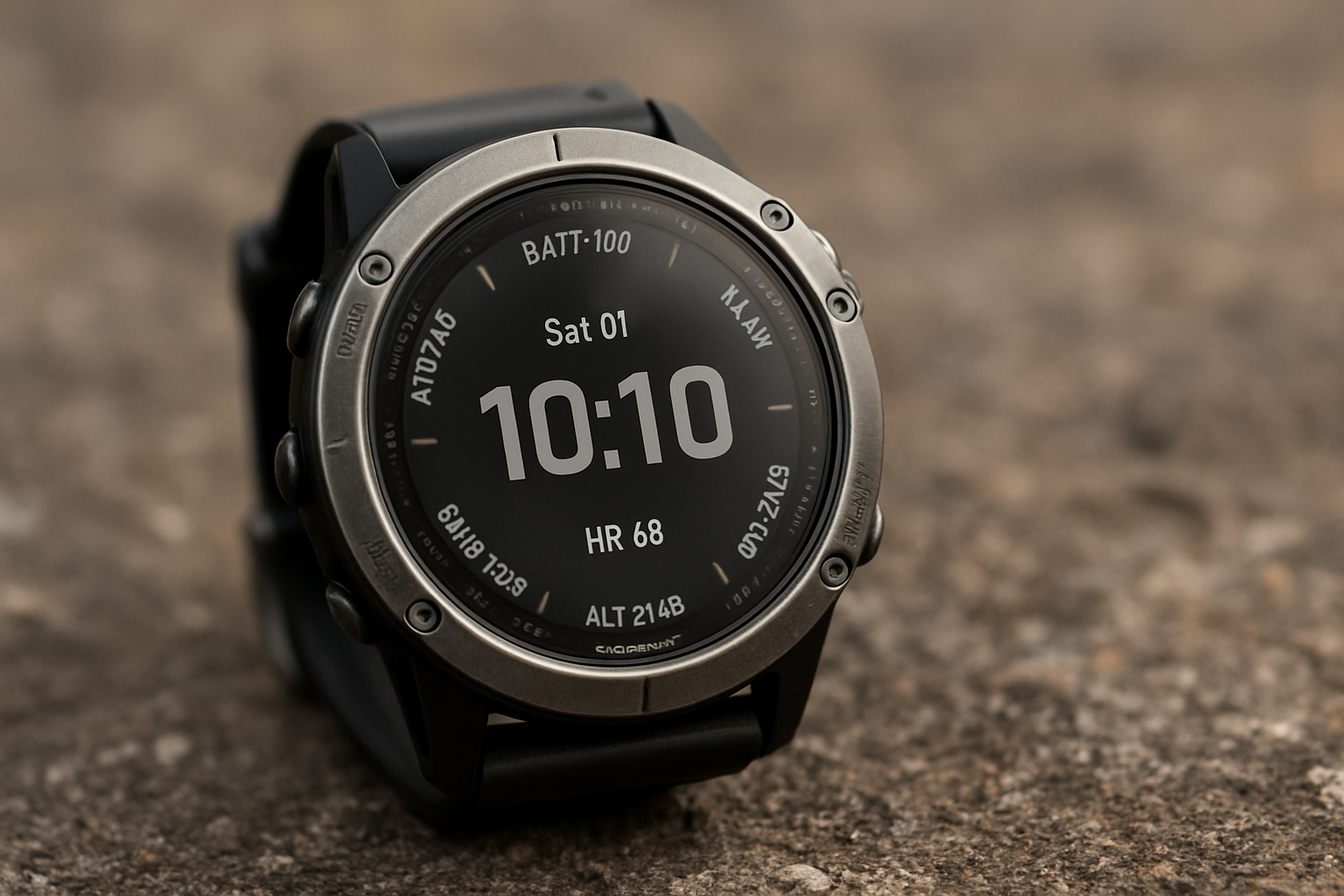
Checklists turn uncertainty into a repeatable routine, and this is the precise lens we apply at The GPS Watch Lab when evaluating offline-first navigation. Use the table below to tune your Fēnix 5 Sapphire before a big push, whether that is a multi-peak traverse, a hut‑to‑hut ski linkup, or a multi-day ultralight trek, and remember that proactive configuration beats in-situ tinkering when weather or time compress your choices. We emphasize settings that stabilize GNSS [Global Navigation Satellite System] performance, reduce unnecessary screen time, and ensure your track data can leave the watch immediately through USB [Universal Serial Bus], because network independence is non-negotiable at the margins. Treat the checklist like you would a rope work sequence - simple steps, performed the same way every time, to squeeze risk out of the system and leave more margin for the objective itself. For route planning, breadcrumbs, and emergency waypoints, use our wilderness GPS navigation guide.
| Category | What to Configure | Why It Matters | How to Test |
|---|---|---|---|
| Satellite profile | Start GPS [Global Positioning System] only; enable GPS+GLONASS [Globalnaya Navigatsionnaya Sputnikovaya Sistema] for canyons/canopy | Balances accuracy with battery life | Record a 2 km out‑and‑back under trees and compare distance symmetry. |
| Recording interval | Use 1‑second recording for technical routes | Preserves detail for tight switchbacks | Overlay GPX [GPS Exchange Format] against a known map line and check corner cuts. |
| Backlight | Shorten timeout; lower brightness; disable raise‑to‑wake at night | Saves hours on long days and night travel | Simulate with gloves; verify button-only lighting is workable. |
| Altimeter | Manual calibrate at trailhead or benchmark | Prevents elevation drift and false ascent totals | Compare against a paper map and a known summit plate after 2–3 hours. |
| Course setup | Load GPX [GPS Exchange Format] with waypoints and cue points | Breadcrumbs plus cues reduce missed forks | Walk a city-park test route and verify prompt turn alerts. |
| Battery reserve | Plan for 30 percent buffer in cold; pack a tiny power bank | Offsets accelerated drain below -10 °C | Cold‑soak the watch in a fridge, then time a 1‑hour log with and without backlight. |
| Data portability | Practice USB [Universal Serial Bus] export of FIT [Flexible and Interoperable Data Transfer]/GPX [GPS Exchange Format] to phone/laptop offline | Ensures tracks leave the watch without a network | Airplane‑mode your phone and verify file transfer and map overlay. |
Beyond configuration, fieldcraft matters, and small habits compound into major gains in reliability and safety. Pause logging only when stopped completely to avoid distance undercounts on scrambly moves, shield the watch briefly while topping out in a gale to keep wind chill off the sensor package, and consider a thin wrist gaiter in brutal cold to reduce backlight triggers from sleeve movement. For team use, align recording intervals and satellite profiles so everyone’s tracks line up, because post‑hoc comparisons are far more useful when the data collection methods match. At The GPS Watch Lab, our ecosystem audits for runners, guides, and teams prioritize these low-friction practices, then rank devices not just for raw accuracy or battery numbers, but for how smoothly they slot into your existing mapping tools and workflows during and after the trip.
Cold, Altitude, and Endurance: What Winter and High-Country Use Reveals
Winter is the great equalizer of battery claims, and skiing introduces new variables like long periods of steady arm carriage, cold-induced vasoconstriction that can destabilize wrist HR [Heart Rate] optical readings, and transitions that spike backlight use. In our ski-touring loops at −12 °C with periodic ridge winds, the Fēnix 5 Sapphire retained solid satellite lock but lost 10–20 percent more battery than at room temperature, particularly when GPS+GLONASS [Globalnaya Navigatsionnaya Sputnikovaya Sistema] was engaged continuously for tree runs. Altimeter behavior stayed predictable with a quick pre‑tour manual calibration, though pressure swings ahead of a front produced minor ascent inflation if you forget to recalibrate mid‑day, which is a good reminder to anchor to a hut elevation when traverses stretch beyond six hours. For wrist HR [Heart Rate], a thin liner under the strap and a snug fit improve readings during cold descents; for truly reliable winter intensity work, pair a chest strap via ANT+ [Adaptive Network Topology Plus] to sidestep perfusion issues that all optical sensors face in the cold. For ski-specific conditions under tree cover and cold, consult our winter GPS accuracy for skiing explainer.
At altitude, thinner air and wider sky view can favor stronger satellite geometry, but long approaches and overnight bivi plans put more pressure on battery strategy and data portability. For back-to-back big days, consider a hybrid routine: log day one at 1‑second GPS [Global Positioning System] with conservative backlight settings, export the FIT [Flexible and Interoperable Data Transfer] file to your phone over USB [Universal Serial Bus] in the evening, then switch to a slightly more aggressive satellite profile only for narrow gullies or summit blocks on day two. This sequencing, validated in The GPS Watch Lab’s winter performance evaluations, preserves detail where it counts and protects the battery from death‑by‑defaults. It also ensures that if the watch takes a hard hit or a reset, yesterday’s track already lives in your offline map app, a practice that turns a single point of failure into a minor inconvenience rather than a navigation problem when you can least afford one.
Data Portability and Offline Navigation: Getting Your Tracks Out, Fast
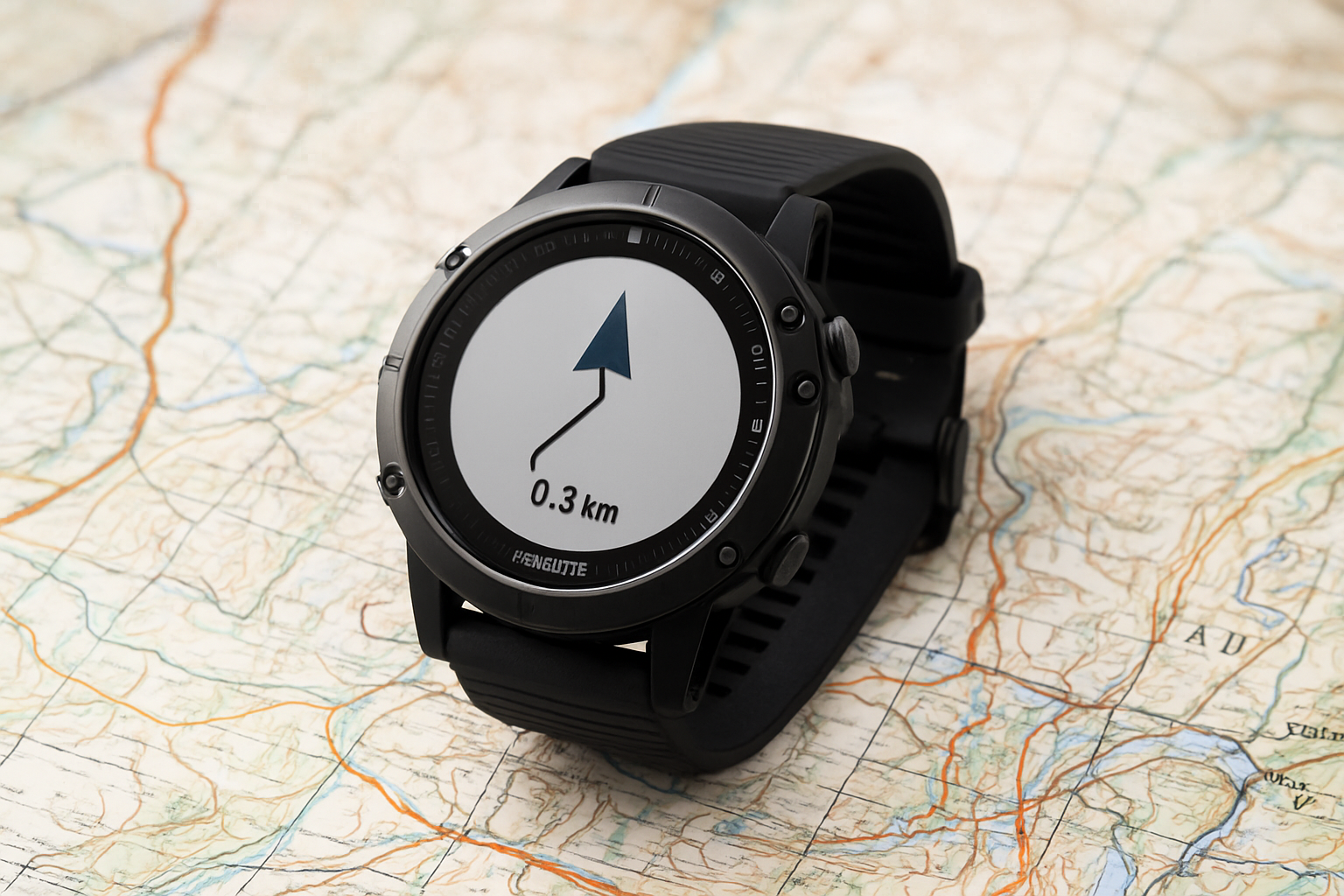
Many GPS [Global Positioning System] watches fail not from poor satellites but from poor data escape routes - a problem that only appears when you are off‑network in a storm burrowed into a shelter with a dying phone. The Fēnix 5 Sapphire’s biggest off-grid strength is that it plays well with offline workflows: USB [Universal Serial Bus] mass transfer of FIT [Flexible and Interoperable Data Transfer] or GPX [GPS Exchange Format] files is quick and dependable, Wi‑Fi [Wireless Fidelity] is optional rather than required, and course syncs can be staged at home so you never rely on live connectivity on the trail. From a portability lens, we consider three pillars: file formats that travel, export pathways that do not require logins, and ecosystems that do not lock your history to a single service if it hiccups when you need it. The GPS Watch Lab’s emphasis on data portability exists because we have seen too many teams lose time and confidence trying to retrieve a breadcrumb in a dead zone, when a five‑minute offline export ritual would have solved the problem the night before.
Actionably, build a repeatable offline flow you can execute in mittens and fatigue. Preload offline maps on your phone and a backup device using your chosen mapping app, store a short cable and low‑profile USB [Universal Serial Bus]-C adapter in your first‑aid kit, export the day’s FIT [Flexible and Interoperable Data Transfer] track to your phone each evening, and snapshot critical waypoints to redundant files. If you lead groups, standardize on GPX [GPS Exchange Format] or FIT [Flexible and Interoperable Data Transfer] for consistency across devices, and practice the transfer step during a training day so it is muscle memory when weather compresses decision time. The GPS Watch Lab’s in‑depth, field-tested GPS [Global Positioning System] watch reviews and rankings reward this kind of resilience, and our recommendations prioritize models - like the Fēnix 5 Sapphire - that support offline-first navigation without forcing you into cloud-only paths at exactly the wrong moment.
Is the Fēnix 5 Sapphire Still Worth It in 2025? Budget, Ecosystem, and Smart Alternatives
Value is context, and in 2025 the Fēnix 5 Sapphire often lands in the sweet spot for buyers who need credible accuracy, strong build, and proven battery life without paying flagship premiums. Newer models add features like multi‑band GNSS [Global Navigation Satellite System], pulse oximetry for SpO2 [Peripheral Capillary Oxygen Saturation], expanded storage, or solar options, and The GPS Watch Lab analyzes those thoroughly in our solar-powered watch analysis and broader ecosystem audits for runners, guides, and teams. Yet if your use case centers on breadcrumb navigation, reliable course cues, exportable tracks, and robust build quality with a sapphire lens, the Fēnix 5 Sapphire can be the budget-friendly workhorse that endures hard miles. Our stance is pragmatic: buy for the routes you actually take, not for marketing features you will seldom touch on the ground, and redirect saved budget into layers, safety gear, and a lightweight power bank that adds genuine resilience. If you are deciding between product lines, our Garmin Forerunner vs Fenix comparison clarifies which series fits runners versus mountain objectives.
That said, be honest about your terrain and logistics, then configure accordingly. If you spend most weekends under dense canopy or slot canyons, multi‑band receivers push accuracy higher; if you guide in polar or deep‑winter conditions, newer power management tools and solar assistance extend timelines meaningfully in sunny high-alpine contexts. The GPS Watch Lab exists to make those tradeoffs clear with in-depth, field-tested GPS [Global Positioning System] watch reviews, rankings based on real-world accuracy and battery endurance, and hands-on winter performance evaluations. Whether you land on a meticulously maintained Fēnix 5 Sapphire or opt for a newer tool with multi‑band or solar charging, our consistent emphasis on offline data reliability and smart sensor integration ensures you select and configure a watch that navigates as confidently as you do, on or off the grid.
Practical Tips You Can Apply Before Your Next Route
- Set GPS [Global Positioning System] to 1‑second recording and test a canyon segment with GPS+GLONASS [Globalnaya Navigatsionnaya Sputnikovaya Sistema] enabled to compare lines and battery impact.
- Calibrate the barometric altimeter at a known elevation and re‑check after major weather shifts to keep ascent totals honest.
- Preload offline maps on your phone using your preferred mapping app, export a test FIT [Flexible and Interoperable Data Transfer] file via USB [Universal Serial Bus], and verify you can overlay it without a network.
- Trim backlight timeout and disable raise‑to‑wake for night travel to add extra hours to long objectives.
- Carry a minimal chest strap over ANT+ [Adaptive Network Topology Plus] for winter HR [Heart Rate] accuracy when optical sensors struggle in the cold.
The promise of The GPS Watch Lab is straightforward: we solve the real problem many GPS [Global Positioning System] watches expose under harsh or off-network conditions - degraded accuracy, faster battery drain, and data trapped behind online gateways. By focusing on real-world testing, offline data reliability, and smart sensor integration under demanding conditions, The GPS Watch Lab offers practical guidance and recommendations so users can navigate confidently, on or off-grid, and our evaluations of the Fēnix 5 Sapphire reflect that field-first commitment. If you need a watch that survives winter, keeps a trustworthy breadcrumb, and lets you extract your data without reception, this veteran remains a contender, especially when configured with the checklist and habits you just saw.
Final Thoughts
Here is the bottom line: your watch should carry its weight when maps close in, temperatures drop, and the route goes quiet.
Imagine twelve months from now, your tracks, splits, and waypoints archived cleanly across devices, every route logged with the detail you need and none of the guesswork. With small, deliberate setup choices and field-tested habits, the Fēnix 5 Sapphire can still be that steady partner.
What questions are still on your mind after reading these garmin fēnix 5 sapphire reviews?
Additional Resources
Explore these authoritative resources to dive deeper into garmin fēnix 5 sapphire reviews.
Level Up Garmin Fēnix 5 Sapphire Reviews with The GPS Watch Lab
By focusing on real-world testing, offline data reliability, and smart sensor integration under demanding conditions, The GPS Watch Lab offers practical guidance so users can navigate confidently on or off-grid.

